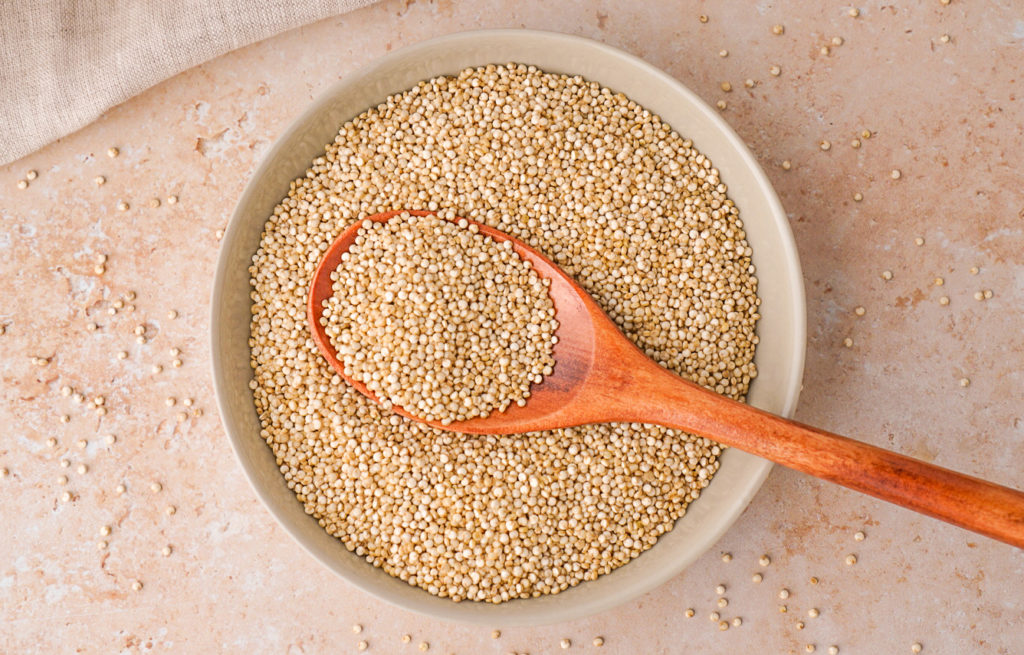Here’s Why Quinoa Should be on Your Weekly Meal Rotation
Quinoa has become a more popular grain in recent years, and for good reason. While some may think of it as comparable to rice, it has far more nutritional value. Protein, fiber, and iron are just some of the standout nutrients in quinoa. While all grains, including rice and quinoa, are known for their ease of preparation, versatile flavor, and carb content, you may want to consider adding quinoa to your meal plan more frequently. Here’s why.

Quinoa is a source of fiber
While all grains are dense in carbohydrate, the composition of other nutrients varies quite a bit grain-to-grain. Fiber is one of the nutrients found in quinoa that is commonly lower in other grains. One cup of cooked quinoa contains about 5 grams of fiber, more than what white and brown rice provide. Fiber can aid in digestive regularity, increase satiety, and may even improve blood cholesterol levels. For these reasons, and more, you should aim to eat fiber-dense foods at every meal. Try cooking quinoa in bulk to easily add it to meals throughout the week.
Quinoa is a complete protein
Protein is another nutrient in quinoa not commonly found in other grains. Additionally, quinoa is considered to be a complete protein, containing all essential amino acids. This macronutrient aids in many bodily functions, including tissue repair, growth and maintenance, fluid balance, and muscle integrity. While many people commonly associated protein with animal-based products, plant-based sources are valuable, too. In fact, plant-based sources of protein, like quinoa, are especially important for those following a vegan or vegetarian diet as their animal sources of protein are limited. You can find about 8 grams of protein in one cup of cooked quinoa. While this is more than most other grains, you likely still need to pair quinoa with another protein source in order to meet your protein needs at a meal.
Quinoa contains iron
This mineral is also synonymous with animal meat, and while red meat especially contains high amounts of iron, you can find this essential nutrient in quinoa and other plant-based foods, too. Iron aids your red blood cells in carrying oxygen throughout the body. Without enough iron in your diet, red blood cell health and oxygen carrying capacity may be negatively impacted, leading to symptoms like fatigue or an anemia diagnosis. Iron is best absorbed when consumed with a source of vitamin C. To help your body absorb the iron from quinoa, try pairing it with a vitamin C-rich food, like tomato, bell peppers, or citrus fruit.
 VIEW ALL PRODUCTS
VIEW ALL PRODUCTS 
